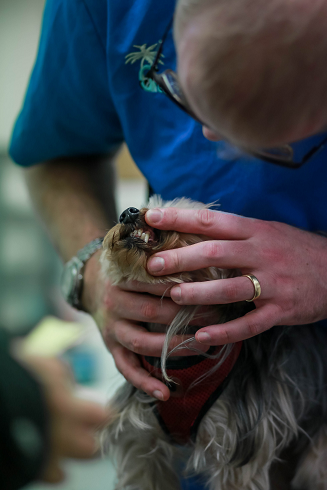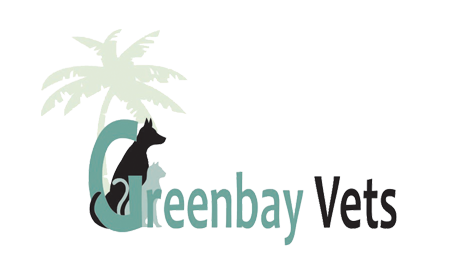
We can offer a full pet dentistry service, including dedicated dental x-ray, at both our Torquay and Paignton veterinary surgeries.
Dental disease is very common in pets. We are passionate about preventing dental disease and offer free nurse dental clinics, where the nurse can check your pet’s teeth and advise about dental hygiene including tooth brushing. For further information on dental disease and home-care, see our fact sheet. We also have videos demonstrating tooth brushing in dogs and cats on our You Tube channel.
If the vet advises we perform a ‘dental’ on your pet, this means a professional clean and polish and full assessment of the teeth, along with extractions of any severely diseased teeth. We have to do this under a general anaesthetic. Many owners are understandably concerned about their pet having an anaesthetic, but leaving dental disease untreated can cause your pet to be in pain. Severe gum disease is even a risk to other organs, as bacteria enter the bloodstream.
We believe in tackling dental disease properly, making our anaesthetics as safe as possible, ensuring your pet is comfortable and gets back to normal as soon as possible, and minimising the need for revision procedures. To this end our dental procedure is as follows:
- A pre-anaesthetic assessment. Many pets that need a dental are older, and the vet may advise a blood test or investigation of any other health problems such as heart disease, prior to the anaesthetic.
- A general anaesthetic, with monitoring of vital parameters such as blood pressure, temperature and oxygen/carbon dioxide levels. We use a drip to help maintain their blood pressure. You can read more about our anaesthetics here.
- We examine and chart all your pet’s teeth in detail and scale and polish the teeth, just like your dentist would. In animals it is not possible to do this properly unless they are under anaesthetic as we need to access all sides of all the teeth, and probe along the gum lines. As the picture below demonstrates, teeth can appear to look better after cleaning but if the roots are exposed like in this dog, the tooth needs to be extracted. Leaving a tooth with disease could lead to pain for the patient and abscess formation, it will not get better simply as a result of cleaning once it has progressed to this stage.
- We use pain relief, including local anaesthetic, if extractions are required.
- We use dental x-ray. This is standard in human dentistry and means that we can assess for disease below the gum line; again in animals it is not possible to do this unless they are under anaesthetic. We can also make sure that all of the tooth is extracted, which helps to prevent future complications. All our cat dentals have full mouth x-rays, as cats are very prone to root problems. In dogs, we make use of the x-ray on a tooth by tooth basis, as required.
- We have modern ultrasonic dentistry machines to enable us to perform efficient and effective teeth cleaning and extractions.
- We include two post-operative check-ups for all our dental patients to ensure they are comfortable and recovering well.
- Once your pet has had any extractions required and the teeth are clean and healthy we advise follow up with dental hygiene at home e.g. tooth brushing. We include unlimited free nurse dental hygiene check-ups to support you with this. The aim of these is to help you keep your pet’s remaining teeth as healthy as possible, to minimise the need for future dental procedures.
If the vet advises a dental, we will provide an estimate for the cost involved. We will endeavour to make this as accurate as possible, but it is not possible to know exactly how many teeth will need to be extracted until your pet is under anaesthetic. Our vets will be happy to discuss the procedure and any concerns with you.
The Royal College of Veterinary Surgeons have produced a statement on anaesthesia-free dental procedures, which you may see advertised by non-veterinary pet service providers. You can access this here.
As well as dogs and cats, we see a lot of dental disease in pet rabbits – you can read more about this in our article.


